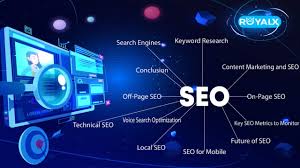Brick-and-Mortar Business: Understanding the Traditional Business Model
In the rapidly evolving world of e-commerce and digital innovation, brick-and-mortar businesses continue to hold a significant place in the global economy. A brick-and-mortar business refers to any business that has a physical location where customers can visit, shop, or interact with the services offered. Unlike online businesses, which operate through digital platforms, brick-and-mortar businesses require a physical storefront, office, or facility.
This article delves into the characteristics, advantages, challenges, and the future of brick-and-mortar businesses in today’s world.
What is a Brick-and-Mortar Business?
A brick-and-mortar business is a traditional company that operates out of a physical space. These businesses can range from retail stores and restaurants to service providers such as law firms, medical offices, and beauty salons. The term “brick-and-mortar” comes from the materials used in constructing physical buildings — brick and mortar — that serve as the base for such businesses.
Examples include:
-
Retail stores like grocery shops, clothing boutiques, and electronics stores
-
Restaurants, cafes, and bars
-
Service-based businesses such as hair salons, auto repair shops, and fitness centers
-
Offices and agencies in industries like real estate, law, and healthcare
While the nature of the business and industry may vary, the fundamental characteristic of all brick-and-mortar businesses is their reliance on a physical location to conduct operations.
Advantages of Brick-and-Mortar Businesses
-
Tangible Customer Experience One of the greatest advantages of brick-and-mortar businesses is the ability to offer a direct, tangible experience to customers. Customers can physically interact with products, try on clothes, test out electronics, and sample food. This immediate, sensory experience helps build stronger relationships and trust with customers.
-
Personalized Service Brick-and-mortar businesses have the advantage of offering personalized, face-to-face customer service. Employees can engage with customers in real time, offer tailored recommendations, and resolve issues on the spot. This human interaction can lead to higher levels of customer satisfaction and loyalty.
-
Local Community Engagement Operating in a physical location often fosters a deeper connection with the local community. Businesses can become staples of their neighborhoods, supporting local economies, and benefiting from word-of-mouth marketing. Being present in the community creates opportunities for networking, collaborations, and partnerships that are often harder to achieve online.
-
Brand Visibility Having a physical store or office increases visibility. Businesses can benefit from foot traffic, local advertising, and a well-placed storefront. A strong location in a high-traffic area can attract new customers who might not have found the business otherwise.
Challenges of Brick-and-Mortar Businesses
-
Higher Overhead Costs Operating a physical location comes with significant overhead costs, including rent, utilities, property taxes, maintenance, and staff wages. These expenses can be substantial, especially for small businesses or those in expensive urban areas. In contrast, online businesses can often operate with lower overhead costs.
-
Limited Reach Brick-and-mortar businesses are geographically restricted. Unlike online stores, which can reach customers globally, physical businesses must rely on local foot traffic or regional marketing efforts. This can limit their ability to expand or cater to a wider customer base without significant investment in multiple locations.
-
Vulnerability to External Factors Physical businesses are often vulnerable to disruptions such as bad weather, local economic downturns, or natural disasters. For example, events like the COVID-19 pandemic showed how quickly physical stores could be forced to shut down, leading to financial strain.
-
Changing Consumer Preferences As consumer preferences evolve, many are turning to online shopping for convenience and variety. Brick-and-mortar stores must adapt to these shifting trends by offering a unique in-store experience, leveraging technology, or implementing an omnichannel approach (combining both online and offline business models).
The Future of Brick-and-Mortar Businesses
While e-commerce continues to thrive, brick-and-mortar businesses are far from obsolete. In fact, many businesses are blending traditional storefronts with digital strategies. This hybrid model, known as an omnichannel approach, allows businesses to offer both in-store experiences and online shopping options.
For example, many retailers have adopted click-and-collect models, where customers can order online and pick up their items at a nearby physical store. Additionally, brick-and-mortar businesses are using social media and digital marketing to enhance their visibility and attract customers.
Furthermore, businesses are increasingly using technology within their physical locations to improve the customer experience. Innovations such as self-checkout kiosks, mobile payment systems, and in-store apps are making it easier for customers to shop, while helping businesses improve efficiency.
Conclusion
Brick-and-mortar businesses remain a vital part of the economy, providing tangible experiences, personalized services, and strong local engagement. However, these businesses face significant challenges, such as high operational costs and competition from online shopping. To stay competitive, many are integrating technology and adapting to changing consumer behavior.
As the business landscape evolves, brick-and-mortar businesses will need to find creative ways to leverage both physical and digital platforms, ensuring they continue to provide value and remain relevant in an increasingly digital world. The future of brick-and-mortar businesses lies in their ability to balance tradition with innovation, offering customers the best of both worlds.




